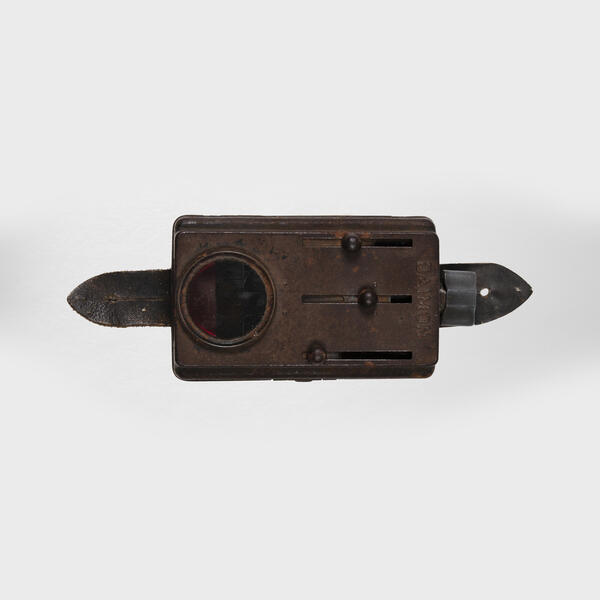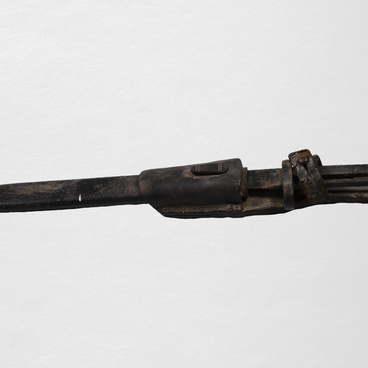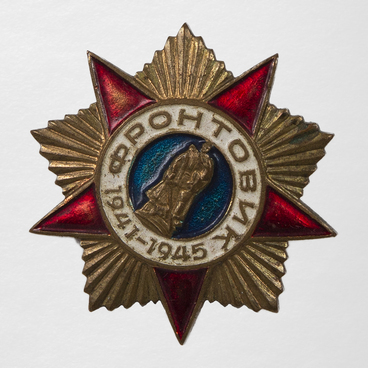The permanent exhibition of the Zimovniki Museum of Local History has a German flashlight model 2233 — one of the most popular among German soldiers. It was produced at Daimon factories in 1936–1945.
The flashlight was an important part of the equipment of German soldiers and officers. During the Great Patriotic War, soldiers often fought at night. In the field, in the middle of the forest, the light was needed to read maps, illuminate the way or give signals to comrades. Therefore, German factories mass-produced flashlights. The most popular companies were Daimon, Petrix, Hassia, Zeiler, and others. Their items can often be seen in photographs and in the documentary films of that time.
However, not everyone had flashlights in the German army. Only non-commissioned officers, intelligence officers, and gendarmes — the army police –were entitled to have them.
The compact flashlight from the museum’s collection consists of a rectangular steel case and a window for lenses with the diameter of 3.8 centimeters. At the top of the device, there were three vertical rollers, which were painted in blue, green, and red, and controlled the lenses — the soldiers could switch between the colored glasses to mask the bright light of the flashlight. The exhibit from the museum eventually became covered with rust and its colored elements faded.
The body of Model 2233 was painted in black or dark olive color, and there was a black switch on the bottom. On the left side, there was a fastener, and inside there was a 4.5-volt battery. There were also battery-free devices in the German army, but they had their drawbacks: the production of such flashlights was expensive, they buzzed loudly, and could not give short signals.
After the Great Patriotic War, Daimon factories continued to produce Model 2233, but its external design changed. The design became simpler with only two colored lenses: green and red. Now such flashlights can be found in the exhibitions of museums, but they are also popular with collectors and reenactors.
The flashlight was an important part of the equipment of German soldiers and officers. During the Great Patriotic War, soldiers often fought at night. In the field, in the middle of the forest, the light was needed to read maps, illuminate the way or give signals to comrades. Therefore, German factories mass-produced flashlights. The most popular companies were Daimon, Petrix, Hassia, Zeiler, and others. Their items can often be seen in photographs and in the documentary films of that time.
However, not everyone had flashlights in the German army. Only non-commissioned officers, intelligence officers, and gendarmes — the army police –were entitled to have them.
The compact flashlight from the museum’s collection consists of a rectangular steel case and a window for lenses with the diameter of 3.8 centimeters. At the top of the device, there were three vertical rollers, which were painted in blue, green, and red, and controlled the lenses — the soldiers could switch between the colored glasses to mask the bright light of the flashlight. The exhibit from the museum eventually became covered with rust and its colored elements faded.
The body of Model 2233 was painted in black or dark olive color, and there was a black switch on the bottom. On the left side, there was a fastener, and inside there was a 4.5-volt battery. There were also battery-free devices in the German army, but they had their drawbacks: the production of such flashlights was expensive, they buzzed loudly, and could not give short signals.
After the Great Patriotic War, Daimon factories continued to produce Model 2233, but its external design changed. The design became simpler with only two colored lenses: green and red. Now such flashlights can be found in the exhibitions of museums, but they are also popular with collectors and reenactors.



